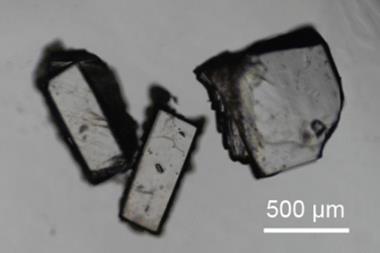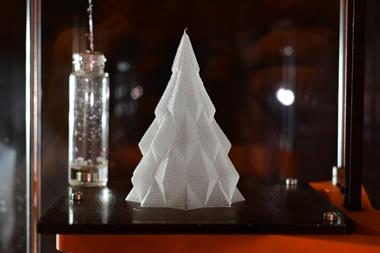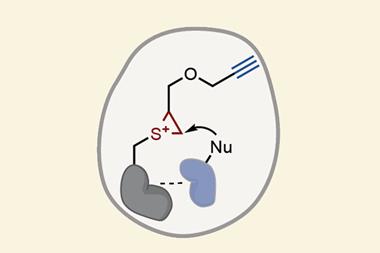Superhydrophobic ‘paint’ can be sprayed or dip-coated onto cotton, glass and metal and survives sandpaper abrasion
Clothing stains may be a thing of the past as scientists in the UK have developed a tough, self-cleaning coating that can be applied to cotton. It is so hard-wearing that it can survive being repeatedly rubbed with sandpaper – unlike other self-cleaning surfaces which are extremely fragile.
Self-cleaning surfaces, which have the ability to repel water, are an attractive proposition for many commercial industries, such as the clothing and hygiene sectors, who want to ensure their products remain dry and free from dirt. But their route to commercial success has been bumpy.
‘The big stumbling block for self-cleaning surfaces up to now, and why they haven’t transferred into practical applications, is they tend to be very mechanically weak,’ says Ivan Parkin from University College London, UK, who was part of the team that developed the coating. ‘If you make one of these surfaces that repels water [and] you were to rub it with a tissue or … even blow on it quite hard with air you would actually remove the coating.’

With durability in mind, Parkin and his colleagues designed a superhydrophobic coating, which is both waxy and rough on the nanoscale – two of the most important elements for any water repellent coating. Parkin explains that to the naked eye the coating would look very smooth, but on the nanoscale it is anything but. The coating consists of titanium dioxide nanoparticles, which allow a surface to be rough, coated with the waxy compound, perfluorooctyltriethoxysilane. By adding the coated nanoparticles to an ethanol-based suspension the team created a paint, which, when combined with an adhesive, can be sprayed onto glass and steel or used to dip-coat cotton.
The team found that any surface coated with the paint, in addition to being superhydrophobic, was self-cleaning. ‘The key feature is because they have this surface roughness, water will form a “ball-type or marble shape” on the surface, rather than properly wetting it,’ explains Parkin. ‘The rolling action of the droplet acts as a miniature vacuum cleaner and it will pick up any dirt, bacteria or viruses, which are on the surface.’
Another important property of this surface treatment, argues Parkin, is that it is much more robust than other self-cleaning surfaces. ‘Surprisingly, not only could you rub it with tissue or blow on it, you can actually rub it with sandpaper,’ he says. ‘We’ve done over 40 cycles of sandpaper testing and it’s still water repellent.’
Ralf Blossey from the Interdisciplinary Research Institute in France believes the self-cleaning surfaces’ ability to resist damage is very important. ‘That’s the key to this story,’ Blossey tells Chemistry World. ‘The method that they use has been used for a long time but the interesting thing [is] that they really bring it to [a] practical application to generate paints and sprays of these nanoparticles.’
Parkin argues that if the team develop their treatment and can scale the process up, there may be great potential for it to be used in a range of commercial products ‘from clothes that could be resistant to staining through to anti-fogging surfaces’.












No comments yet